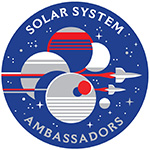Activity Key








The Astronomical League produces monthly star maps in both English and Spanish. We have mirrored downloadable copies of the latest guides inside.

This month, we celebrate 10 years of detecting gravitational waves with LIGO! Learn how you can get involved with October's Night Sky Notes!



Summer skies bring glorious views of our own Milky Way galaxy and the Great Rift to observers blessed with dark skies. Learn more about the Great Rift and the stories it contains in this month's Night Sky Notes!

Scorpius is sizzling in the summer sky! Observe the heart of the scorpion, and learn a bit about this constellation from a different perspective in July's Night Sky Notes!




This Toolkit provides activities and demonstrations that explore the Sun and its powerful magnetic fields, how these fields generate the features we observe, and how the Sun's magnetic activity affects our way of life and technologies here on Earth.

Celebrate the summer solstice here on Earth, and learn about seasons on other worlds in June's Night Sky Notes!
Exoplanet observation has come a long way since the 19th century. Learn about three methods used to hunt for other worlds in May's Night Sky Notes, originally published in 2015.
Planets, stars, galaxies, and other objects in space give off a wide range of visible and invisible forms of light. Because different forms of light have different characteristics, no single observatory can detect all wavelengths. Learn about the electromagnetic spectrum in April's Night Sky Notes!
March is the start of spring in the Northern Hemisphere; with that, the hunt for Messier objects can begin! Learn how to spot a handful of these deep-sky objects in March's Night Sky Notes!



Download this 2025 poster to share in celebrations from eclipses to the International Observe the Moon Night - and many more in between!
Light pollution hinders astronomers and impacts many others. Learn how to measure and reduce it with smart lighting and community education efforts inside February's Night Sky Notes article, originally published in November 2018.
January 2025 will be an excellent opportunity to spot Mars and some of its details with a medium-sized telescope. Be sure to catch these three events this month.
This year, Night Sky Network celebrated its 20 year anniversary! Learn about the history of this project in this special article.
Jupiter is bright and easy to spot from our vantage point on Earth, helped by its massive size and banded, reflective cloud tops. Find out how you can see it for yourself inside December's Night Sky Notes article, originally published February 2023.

Get ready for the next comet and find out how comets are connected to some of our favorite annual astronomy events with November's Night Sky Notes!
If you're thinking of a galaxy, the image in your head is probably the Andromeda Galaxy! Studies of this massive neighboring galaxy, also called M31, have played an incredibly important role in shaping modern astronomy. Find out how you can see it for yourself inside October's Night Sky Notes article, originally published September 2021.




What happens when rain or inclement weather rolls in, and you need to do something with your visitors while you wait for the skies to clear up? Well, after you double check to make sure you've safely stashed your telescope, try out one of these popular ni
March skies feature many dazzling stars and constellations but two of the brightest stars are the focus of our attention this month: Sirius and Procyon, the dog stars! Discover more about these two nearby star systems inside.






